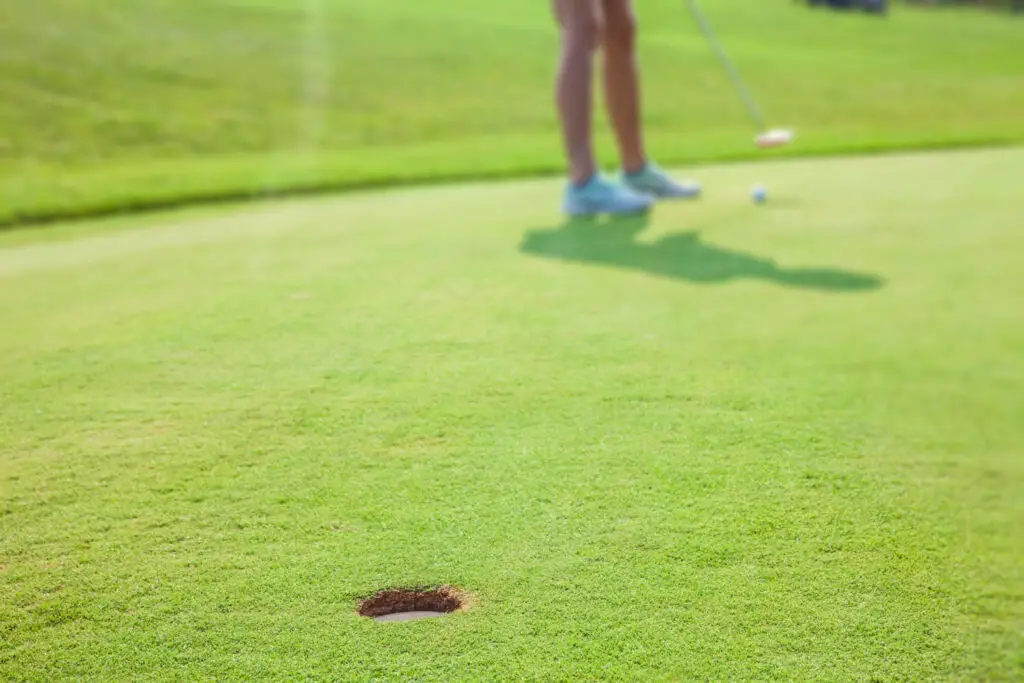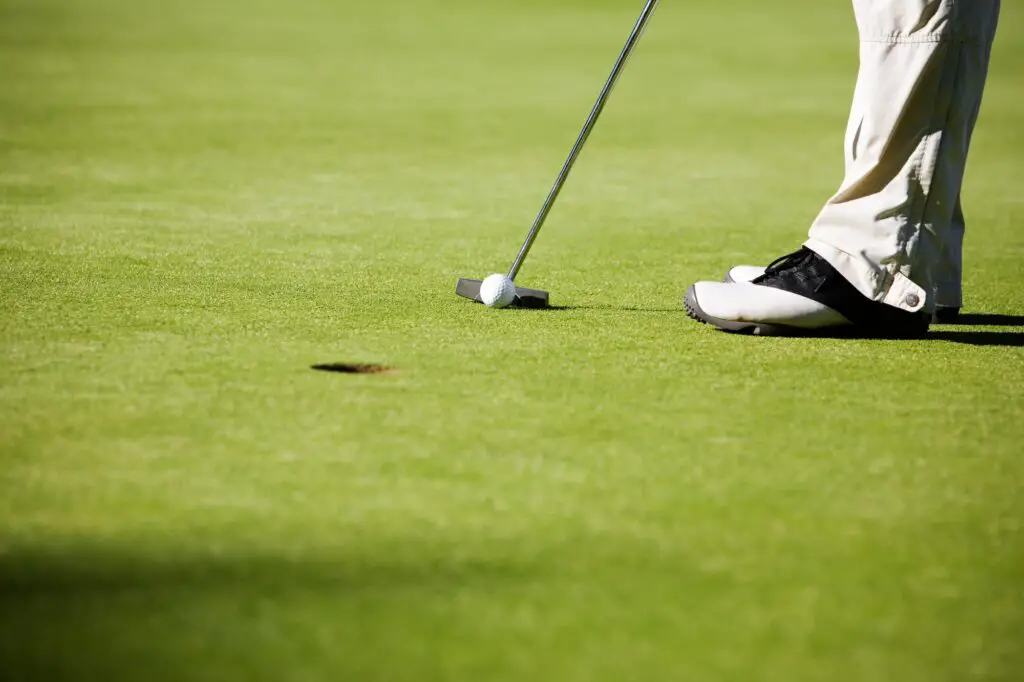Last Updated on November 9, 2023
Golf is a beloved pastime, and mastering the art of putting can be one of the most rewarding experiences for any golfer. Unfortunately, improving your putts isn’t always easy. But with some practice and dedication, it’s entirely possible to take your game to the next level! In this article, we’ll give you all the tips and tricks you need to improve your golfing skills in no time. So if you’re looking to up your game on the green, look no further – here are our top strategies for becoming an ace at putting.
Definition of Putting
Putting is an essential part of golf, and it’s the process of hitting a ball into the cup from various distances. It requires precise technique and accuracy to be successful on the green. Putting basics involves understanding how hard to hit the putt and where you should aim based on the size of the cup.
Golf putting involves judging distance accurately as well as reading slopes that could influence your shot. A good putting technique will help you get close enough to make a short putt or even sink it in one try! To improve your game, there are several tips for golf putting, such as keeping your head still during your stroke, not looking up until after impact, and making sure your arms stay parallel with each other. With practice, you can master these techniques to become a better golfer overall.

Practising Basics
Now that we understand the definition of putting, it is time to begin improving our game. To improve at any skill, practice is essential, and golf is no different. When first starting out, it can be helpful to review some basic concepts in both putting and general golf play. Even if you are a more experienced golfer, it may still be beneficial to brush up on fundamentals such as technique, alignment, proper grip and stance.
After reviewing the basics, get outside and start practising! Utilise drills for your specific areas of improvement. If you need help creating drills or determining which skills require more attention than others, seek guidance from an instructor or coach who can provide tailored advice for your individual needs. No matter what level of golfer you are–beginner or advanced–regularly scheduled golf practice is key to achieving short-term goals and long-term success.
Evaluating Your Stroke
Evaluating your putting stroke is a critical step in improving your performance on the green. Start by analysing each component of your stroke and take note of any areas you may need to optimise or correct. Take into account your body posture, grip pressure, ball placement, clubface angle at impact, and follow-through, as these are all important aspects of optimal performance. Make sure that you have a consistent stance for every putt and that it allows for proper weight distribution throughout the swing.
Additionally, consider how you hold the putter during the backswing and downswing. A light grip can help reduce tension while maintaining control over the direction of the shot. Finally, focus on controlling both speed and line when practising so that you can better evaluate your progress towards improvement.

Improving Accuracy and Distance
Now that you’ve evaluated your stroke and pinpointed areas of improvement, it’s time to focus on improving accuracy and distance. To hit more accurate putts, practice focusing on the centre line of your target. Visualise this while setting up the ball, and keep your eyes focused on the spot where you want the ball to land.
Additionally, varying distances during practice rounds so you can better control both long and short putts. For longer putts, make sure your backswing is smooth and even. Too much acceleration or deceleration will result in off-target shots. Likewise, for shorter putts, be mindful of keeping a steady tempo throughout the stroke – jerky movements might cause misdirection. With practice and patience, you’ll soon have consistent accuracy with various lengths of putting strokes, giving yourself an advantage over other golfers.
Strategic Planning on the Green
Having a good putting strategy on the green is essential to improving your golf game. It’s important to have an understanding of hole planning, reading greens, and how they all come together. To do this effectively, you need to assess each situation carefully before making any decisions. When studying the green, observe factors such as break lines, slopes, distances between trees and bunkers, etc. This will give you a better perspective when it comes time to make putts.
You should also consider what type of shot would best suit the given circumstances: power or accuracy? Aim for precision during normal situations; experiment with long shots if necessary. Chipping around obstacles can be beneficial in certain cases, but it depends on the severity of the obstacle. While practising these techniques regularly will help develop muscle memory and eventually improve your overall putting skills.
Frequently Asked Questions
What Type of Putter Should I Use?
When it comes to improving your putting skills in golf, one of the most important decisions you will make is selecting the right putter. There are a variety of different types available, each with its own set of features and benefits. You need to take into consideration various factors when selecting the best putter for your game, such as putter type, selection, grip, length, and more.
The first step in finding the perfect putter is identifying what type will work best for you. Generally speaking, there are two popular categories: blade and mallet-style putters. Blade-style putters have a traditional look and feel that many players prefer, while mallets offer greater stability on off-centre hits due to their heavier head weight. Additionally, they often feature alignment aids which can help improve accuracy over time. When choosing between these two styles, ask yourself which style appeals to you visually or feels better in your hands.
What Are Some Drills to Help Me Improve My Putting?
If you’re looking to improve your putting, it’s important to practice drills that can help hone your skills. Putting drills are a great way to get comfortable with the fundamentals of golf and become more accurate on the green. With plenty of practice drills available, you’ll be able to find one that works for you and helps you to improve your putting game.
There are many different types of drills that can help develop better putting form and accuracy. For example, some popular drills include using alignment sticks or hula hoops to work on aim, as well as practising on an uphill putt green so that you can focus on speed control. Additionally, there is “shadow” putting where you trace out the path of the ball without actually hitting it – this will give you a better feel of how much power needs to be used when striking the ball. There are also various other tips, such as keeping your head still while swinging, gripping lightly with both hands etc., which all contribute towards improving your overall putting balance and technique.
How Long Should I Practice Putting Each Day?
Practising your putting can make a big difference in improving your game. How long should you practice each day? The amount of time you spend on the course depends largely on individual goals and skill level, but there are some basic guidelines to follow when it comes to daily putting drills.
The key is to focus on quality rather than quantity. You don’t necessarily need to hit hundreds of putts every day; instead, set specific putting practice goals depending on what areas of your game you want to work on. For example, if you’re trying to improve distance control, try hitting 15-20 putts from varying distances while keeping track of how many end up within a certain area or circle around the hole. If accuracy is an issue, then you could do short Putt challenges where you have to sink as many putts as possible in a limited period of time – this helps build confidence and encourages focused practice sessions.
Conclusion
In conclusion, improving your putting in golf is all about practice and making sure you have the right equipment. Finding a putter that suits you best is important, as it should fit comfortably with your stance and grip. Practising in a limited space can be done easily by setting up cones or other objects to help improve accuracy. Doing drills such as the five-foot drill, short game challenge, and pendulum stroke will also help develop consistency. With this knowledge, you’ll soon become an expert golfer!



